Editorials
The Hidden Curriculum: Microaggressions and Resistance in ‘MASTER’ (2022)

“You can’t get away from it Jasmine. It’ll follow you, believe me, I know.”
If there’s anything more certain than the sun, it’s the irreverent notion that a person of color is not only not qualified, but they should also feel lucky to be within the spaces they reside when “allowed”.
As of late, during this tumultuous election year, we’ve gotten used to (not really) the term “diversity hire”. In the 80s, it was the great disdain for Affirmative Action acts from the 60s. In the 50s, it was the civil rights movement. We’re 30 years shy of a century of oppression, adversity and undertow in academic institutions, and it permeates everything we can possibly think to be involved in, appointed to or admired for. In the 2022 film Master by Mariama Diallo, we explore cultural depth and neverending societal issues with race, microaggressions, and othering in the academic world.
The film opens with Gail Bishop (Regina Hall), the first Black Master of House at Ancaster University, a predominantly white collegiate atmosphere that’s almost as old as the country. She works to settle in as best she can in a home rife with pictures of old white men and cookie jars in the shape of derogatory Black effigies, but we’ll get to that later. At the same time, an eager and hopeful Jasmine Moore (Zoe Renee) arrives at Ancaster. Jasmine is given her assignment, room 302, the haunted room. Oooooh!
Well, she’s not even told that it’s haunted. It’s alluded to quite haughtily by the Welcome Crew.
It’s a shame the steep spiral downward in trauma this film takes because these experiences, save for most of the supernatural pieces, are true to life. The wonder of starting new, being a part of something that sparks joy. Being the first Black anything academically is always seen as a how-did-they-get-that-couldn’t-be-because-they’ve-earned-it, and it’s a mountain on top of a mountain. For Jasmine and Gail, the hike is just beginning.

A Live One:
Jasmine takes to the haunted room, and realizes, quite startlingly, that she has a roommate, Amelia (Talia Ryder). Amelia and Jasmine hit it off nicely when it’s just the two of them, but when they are joined by Amelia’s more affluent, more snotty (and also white) friends Cressida (Ella Hunt) and Katie (Noa Fisher), the tables turn out of Jasmine’s favor. She’s constantly interrupted when she shares her own stories in order for them to tell their own. She is picked on, cornered, and subjected to soft-handed bullying at the hands of these girls’ possible paramours as well. It’s a common situation for any person of color in a predominantly white space. The period of adjustment takes longer because the goalposts keep changing. And the game of making you and keeping you ill-adjusted is an ongoing sport.
Now, the haunted room theory permeates Jasmine’s waning emotional and mental state as she begins to have hellish nightmares: losing time, waking up believing she’s being attacked by an entity or treated like a specimen to be studied. Jasmine uncovers the death of the first Black student who resided in that room, and from that point on, the thinly veiled and petty racist cracks become less subdued.
Jasmine’s struggles with belonging and the doubt of her aptitude begin externally. A valedictorian, a brilliant mind, and a bubbly personality squashed into a shell of Blackness. The Black lunch staff is all smiles with the white students but when Jasmine comes through the line, she’s treated brusquely, silently as if to say, you think you’re something special by being on that side of the aisle. It’s such a visceral scene because society has made its perpetuated caste system for so long, there’s bound to be some internal issues that folks struggle with. Sometimes it causes anger, jealousy or shame. In this scene, it’s a mix of it all and cuts deep in less than 120 seconds.
In light of being a suspect, she’s investigated when an alarm sensor goes off in the library. When it’s revealed that Jasmine has nothing belonging to the library, the urge is to check her bag. The accusatory tone of the librarian and the growing crowd behind her only adds to the humiliation. Guilty until proven innocent. During a class with the only other person of color, her instructor, Dr. Liv Beckham, discussed color usage in The Scarlet Letter. Jasmine believes that using the color white so often points to Hester’s daughter Pearl’s innocence, but you can tell she wants to dive deeper than that – much deeper. When white student Cressida chimes up that the white points to white people of that time and their ignorance and disdain for color or non-conforming women. Listen.
I know many people of color who viewed this film and felt everything Jasmine’s body language was showing. For real, Cressida?! If that statement had come out of Jasmine’s mouth, would she be seen as the angry Black woman? The race card thrower? The reverse racist? Surely, and not as the wise, forward-thinking, woke, and diversity-first crown-wearer like Cressida gets to be. And there’s another rub. Don’t be too smart, don’t be too confrontational, don’t question the system.
When Jasmine confronts Liv for giving her a poor grade in class and praising the white students, Liv construes that Jasmine was from an “inner city, poor graded school, things work differently here”. Jasmine has to fight to tell her she’s not a hard knock case, she’s from the suburbs, AND she was the valedictorian, to which Liv is like oh gee wilickers I didn’t know. The casual assumptions about her intelligence and background, especially from Liv, sting, in the same ways the attitudes from the lunch crew stung. Jasmine’s experience is compounded by the ingrained and institutional barriers that exist for Black and Brown students. She’s constantly having to prove herself academically and socially, play maid and errand runner, and in a coup de grace to further distance and isolate her from her roommate, she’s made into a pawn as Amelia’s crush. Tyler (Will Hochman) begins to flirt and make out with Jasmine in a “how scandalous is it that I’m hooking up with the Black girl” way, because that’s a scandal ‘round his parts! Extensive spiritual sigh.
She’s constantly reminded that she doesn’t belong and is some sort of bone of contention for many members of the school and faculty. It’s almost as if, even though all of our barrier-breaking, that these spaces are not designed for us to succeed, much like corporate and government spaces; the navigation of personal and racial bias has you exhausted before you even end your workday.

And Nothing Ever Changes:
Gail’s situation is less nuanced and much heavier in the “you should feel incredibly lucky we’ve decided to let you do this” vibe. There is not a person of color out there in an academic, corporate, or government setting (and let’s go further, a friend group) where they didn’t feel tokenized or like a box tick. As a tenured professor, Gail Bishop represents the more mature side of this coin for Black women in academia. Despite all her successes, she’s constantly countermanded and undermined, not to mention low-key chided by her colleagues with comments like, “Should we call her Obama?”. The microaggressions are more serrated for her, especially when her all-white board – mirroring Jasmine’s all-white “friend” group – cast doubt on her professional merit and her ability to be impartial when faced with a serious situation regarding another professor of color. She’s deemed unqualified and unsuited for the prestigious gift they’ve given her. It’s this type of structural inequity and institutional racism, not to mention gross lack of cultural awareness on the part of predominantly white institutions that create this caustic and hostile environment where stereotyping and discrimination often impact promotions, tenure opportunity and space for new Black and Brown professors. Is Gail as secure as she thinks she is? All signs point to no with conditions.
Despite all of her glossy ideals and sense of friendship and availability with her student, the lion’s share of the faculty at Ancaster have deep-seated racial bias that’s imbruing on the school through Jasmine and Gail’s experiences and not only are they none the wiser – they don’t seem fussed enough to care. When Jasmine is overcome by visions, nightmares, and just enough racism to push her over the edge and out of a window, Gail tells a recovering Jasmine not to let them drag her down. Fight.
“You can’t get away from it Jasmine. It’ll follow you, believe me, I know.”
Advice Gail should heed herself. As that tension between her and the faculty escalates after poor Jasmine’s suicide, Gail knows that even though they create shiny diversity programs and exude a semblance of a beacon for marginalized academics, they don’t truly care for Black or Brown students. The microscope will always be at full magnification, the scrutiny and judgment on eleven and the bias, sky high. Our experiences, knowledge, achievements, and mental prowess will always be viewed through a lens of skepticism.
By the end, Gail knows that she is merely that token, that box tick to get things done and having the public ignore their racist ways as long as a Black patsy is standing at the front of the line to prove they don’t see color. Nothing is ever going to change. Not for her, not for any other student of color, ever.
Diallo’s film was released with mixed reviews, and I understand it’s a polarizing film. It’s a stark look at what it’s like to be a Black woman in higher education, and I don’t think people were ready for the “Are we the baddies?” conversation. Thinking back to my college days, I was met with millions of microaggressions at the time that I didn’t know weren’t just part of life. Majoring in Business, we were asked to make a business plan for a business we’d like to create someday. I chose a bookstore/record shop, basically a small-town Borders. When I presented it to my professor I was met with, and I quote, “Oh wow! I was expecting like a hair salon, weaves and nails and stuff.” Hmm. Even having the highest GPA in the course, I was constantly asked to further cite my sources as the reports were “just a little too clean”, something my white counterparts were never asked to do.
It’s hell representing yourself and all you’ve accomplished, and in just a few months, that light is dulled, diminished, and, in Jasmine’s case, snuffed out far too soon.
Master’s prestigious Ancaster is more than just a setting, it’s a symbol of a broader societal issue with race, privilege, and power. Black and Brown academics are devalued by design. It’s a vacuumed microcosm of a society that promotes diversity and meritocracy, all the while creating and perpetuating systemic barriers that prevent Black and Brown groups from thriving without mobilizing or leaving all together. Master keenly explores how microaggressions add up. Assumptions about intelligence, qualifications or the capacity to succeed, reveal a deep unspoken bias that infiltrates marginalized women beyond the classroom.
Editorials
Is ‘Scream 2’ Still the Worst of the Series?
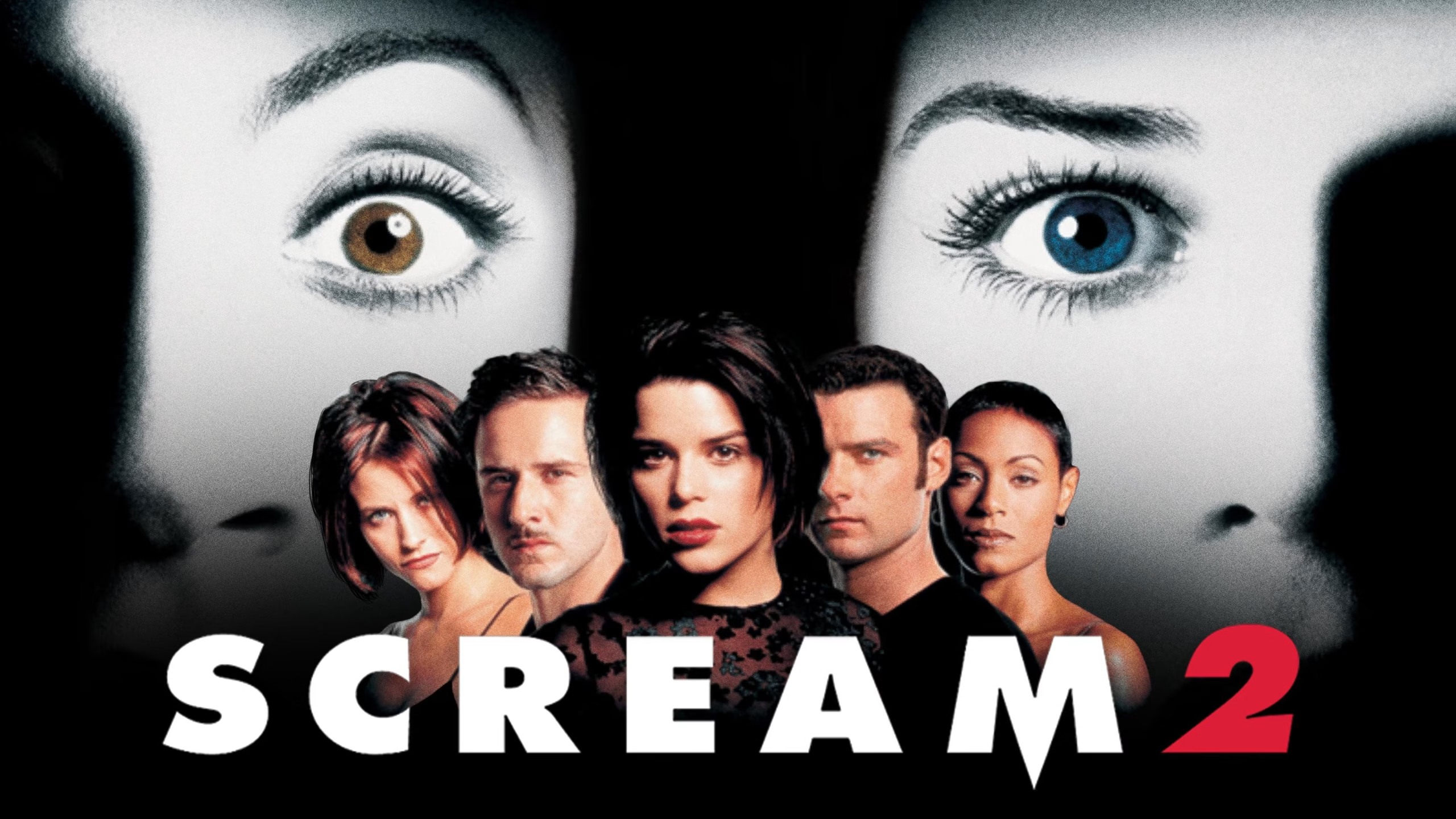
There are only so many times I can get away with burying the lede with an editorial headline before someone throws a rock at me. It may or may not be justified when they do. This article is not an attempt at ragebaiting Scream fans, I promise. Neither was my Scream 3 article, which I’m still completely right about.
I do firmly believe that Scream 2 is, at the very least, the last Scream film I’d want to watch. But what was initially just me complaining about a film that I disregard as the weakest entry in its series has since developed into trying to address what it does right. You’ve heard of the expression “jack of all trades, master of none”, and to me Scream 2 really was the jack of all trades of the franchise for the longest time.
It technically has everything a Scream movie needs. Its opening is great, but it’s not the best of them by a long shot. Its killers are unexpected, but not particularly interesting, feeling flat and one-dimensional compared to the others. It has kills, but only a few of them are particularly shocking or well executed. It pokes fun at the genre but doesn’t say anything particularly bold in terms of commentary. Having everything a Scream movie needs is the bare minimum to me.
But the question is, what does Scream 2 do best exactly? Finding that answer involves highlighting what each of the other sequels are great at, and trying to pick out what Scream 2 has that the others don’t.

Scream 3 Is the Big Finale That Utilizes Its Setting Perfectly
Scream as a series handily dodges the trap most horror franchises fall into: rehashing and retreading the same territory over and over. That’s because every one of its films are in essence trying to do something a little different and a little bolder.
Scream 3 is especially bold because it was conceived, written, and executed as the final installment in the Scream series. And it does that incredibly well. Taking the action away from a locale similar to Woodsboro, Scream 3 tosses our characters into the frying pan of a Hollywood film production. Despite its notorious number of rewrites and script changes (one of which resulted in our first solo Ghostface), it still manages to be a perfect culmination of Sidney Prescott’s story.
I won’t repeat myself too much (go read my previous article on the subject), but 3 is often maligned for as good a film as it turned out to be. And for all of its clunkier reveals, and its ghost mom antics, it understands how to utilize its setting and send its characters off into the sunset right.
Scream 4’s Meta Commentary Wakes Scream from a Deep Sleep
As Wes Craven’s final film, Scream 4 has a very special place in the franchise. It was and still is largely adored for bringing back the franchise from a deep 11-year sleep. With one of the craziest openings in any horror film, let alone a Scream film, it sets the tone for a bombastic return and pays off in spades with the journey it takes us on.
Its primary Ghostface Jill Roberts is a fan favorite, and for some people, she is the best to ever wear the mask. Its script is the source of many memorable moments, not the least of which is Kirby’s iconic rapid-fire response to the horror remakes question. And most importantly, it makes a bold and surprisingly effective return for our main trio of Sidney, Dewey, and Gale, whose return didn’t feel trite or hammy when they ended up coming back to Woodsboro for more.
Craven’s work on 4 truly understands the power its predecessors had exerted on the horror genre, both irreverent in its metacommentary and celebratory of the Scream series as a whole. The film is less of a love letter to the genre and more of a kicking down of the door to remind people what Scream is about. 4’s story re-established that Scream isn’t going away, no matter how long it takes for another film, and no matter how many franchises try to take its place.
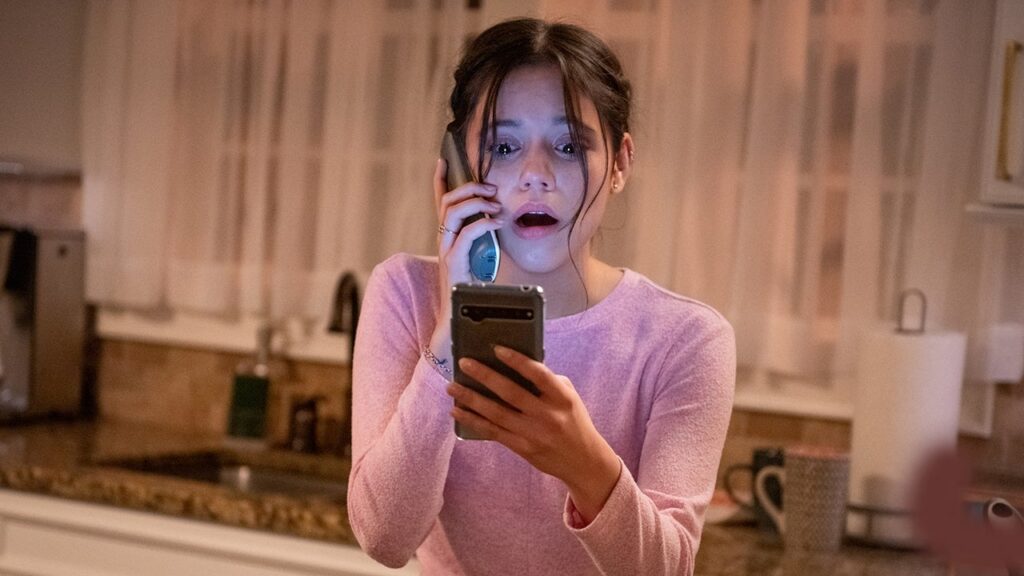
Scream 5 & 6 Is Radio Silence’s Brutal and Bloody Attitude Era
Put simply, Scream 5 and 6’s strong suit was not its characters. It was not its clever writing. The Radio Silence duology in the Scream series excelled in one thing: beating the hell out of its characters.
Wrestling fans (of which there is an unsurprising amount of crossover with horror fans) will know why I call it the Attitude Era. Just like WWE’s most infamous stretch of history, Radio Silence brought something especially aggressive to their entries. And it’s because these films were just brutal. Handing the reins to the series, Bettinelli-Olpin and Gillet gifted a special kineticism to the classic Scream chase sequences, insane finales, and especially its ruthless killers.
All five of the Ghostfaces present in 5 and 6 are the definition of nasty. They’re unrelenting, and in my humble opinion, the freakiest since the original duo of Stu Macher and Billy Loomis. Getting to hear all the air get sucked out of the room as Dewey is gutted like a fish in 5 was still an incredible moment to experience in theatres, and it’s something I don’t think would have happened if the films were any less mean and any less explosively violent.
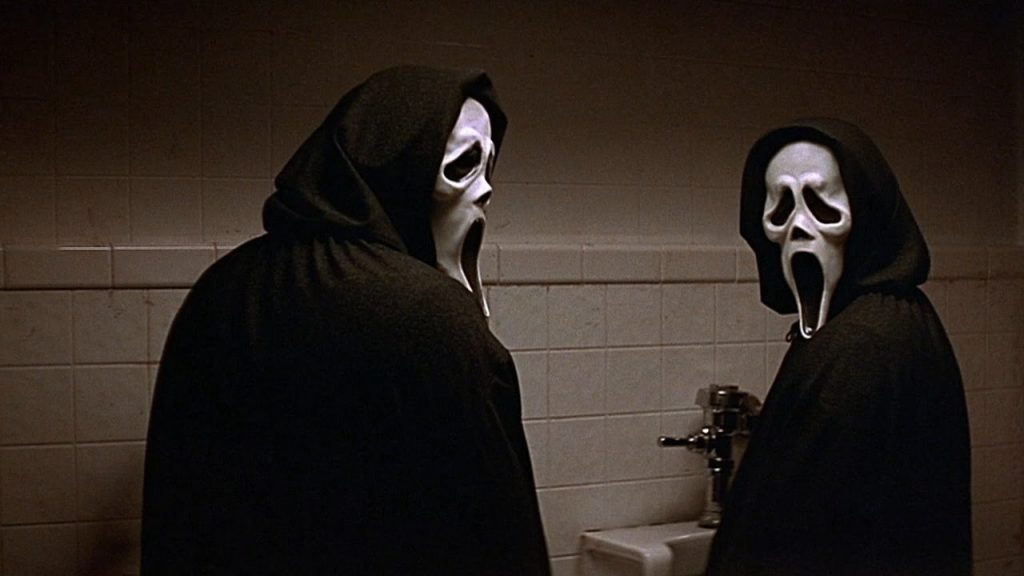
So, What Does Scream 2 Do Best Exactly?
So now, after looking at all these entries and all of their greatest qualities, what does Scream 2 have that none of the others do? What must I concede to Scream 2?
Really great character development.
Film is a medium of spectacle most of the time, and this is reflected in how we critique and compliment them. It affects how we look back on them, sometimes treating them more harshly than they deserve because they don’t have that visual flash. But for every ounce of spectacle Scream 2 lacks, I have to admit, it does an incredible job of developing Sidney Prescott as a character.
On a rare rewatch, it’s clear Neve Campbell is carrying the entirety of Scream 2 on her back just because of how compelling she makes Sidney. Watching her slowly fight against a tide of paranoia, fear, and distrust of the people around her once more, watching her be plunged back into the nightmare, is undeniably effective.
It’s also where Dewey and Gale are really cemented as a couple, and where the seeds of them always returning to each other are planted. Going from a mutual simmering disrespect to an affectionate couple to inseparable but awkward and in love is just classic; two people who complete each other in how different they are, but are inevitably pulled back and forth by those differences, their bond is one of the major highlights throughout the series.
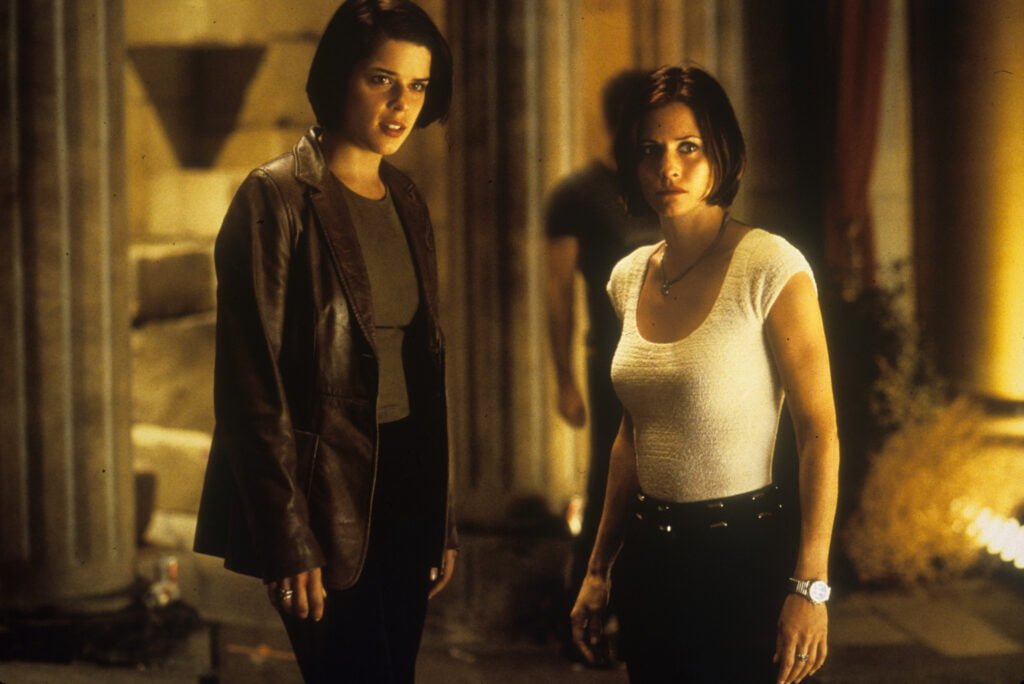
Maybe All the Scream Films Are Just Good?
These three characters are the heart of the series, long after they’ve been written out. I talk a big game about how Scream 3 is the perfect ending for the franchise, but I like to gloss over the fact that Scream 2 does a lot of the legwork when it comes to developing the characters of Dewey, Gale, and especially Sidney.
Without 2, 3 just isn’t that effective when it comes to giving Sidney her long deserved peace. Without 2, the way we see Sidney’s return in 4 & 5 doesn’t hit as hard. All of the Scream movies owe something to Scream 2 in the same way they owe something to the original Scream. I think I’ve come to a new point of view when it comes to the Scream franchise: maybe there is no bad entry. Maybe none of them have to be the worst. Each one interlinks with the others in their own unique way.
And even though I doubt I will ever really love Scream 2, it has an undeniable strength in its character writing that permeates throughout the whole franchise. And that at the very least keeps it from being the worst Scream film.
Editorials
The Halloween Franchise Peaked With H20 Here’s Why
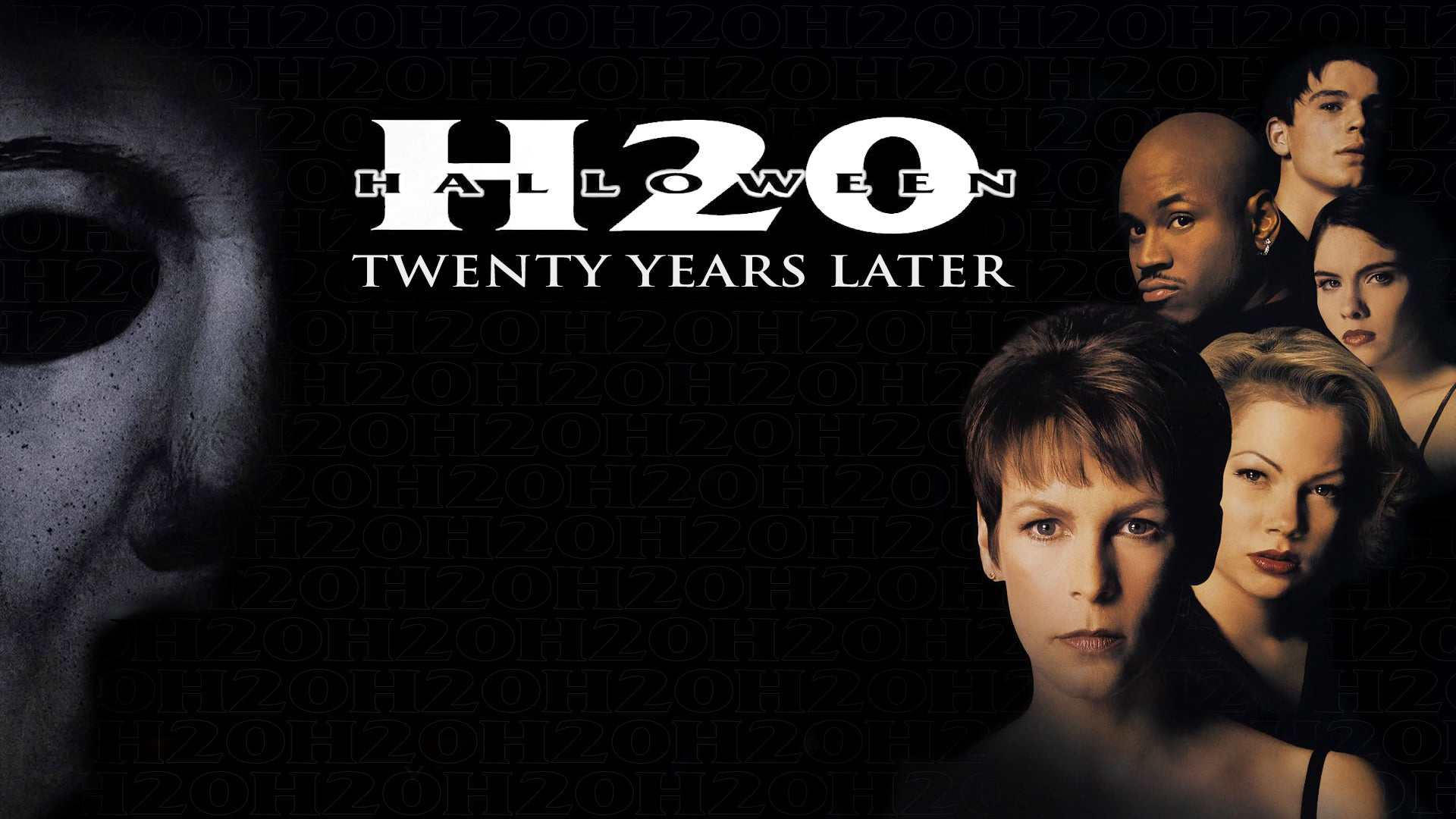
I’m going to begin this conversation with a sort of insane thought. Halloween as a franchise maybe should have ended with its first film.
That’s not to say there’s no value in the Halloween films. Much to the contrary, I like the first three films a lot. I recommend Halloween 3: Season of the Witch to people an annoying amount; I even try to watch it a few times every October to keep the vibes up. And as you already know from clicking on this article, I enjoy Halloween H20: 20 Years Later quite a bit.
I’ve even softened up on the Rob Zombie remake duology over the years. I don’t like them, but it’s like getting flowers, I can still appreciate them. However, Halloween, as a series, has long suffered from its own success. And sometimes, it feels like it’s just going to keep suffering.
HALLOWEEN’S FIRST BOLD CHOICE AFTER 16 YEARS OF WAITING
It’s easy to forget that John Carpenter’s original Halloween was effectively the Paranormal Activity of its time. Flipping a cool $70 million and change off of a $300,000 budget, it has had a genuinely immeasurable impact on the cinematic landscape and how horror films are made.
For some, that’s a bad thing. Notoriously, my beloved 3rd entry in the franchise was considered a hard misstep by audiences. Everyone knows the story; the resounding “Where’s Michael?” response to the third entry gunned down Carpenter’s desires to turn Halloween into an anthology series. So, after going into hiding for 5 years, Halloween 4 continued the story of Michael in 1988.
And then it just kept going.
As the years went on, it became progressively harder and harder to innovate, resulting in some very odd plotlines and tones. Which is why Halloween H20 is where the franchise peaked. Because it had a rare essence to it. It had guts.
It was willing to actually kill the series once and for all, even if it was impossible to do so.
EVIL DOESN’T DIE TONIGHT, THE CONTRACT SAYS SO
Before David Gordon Green’s reboot trilogy brought Laurie back as a Sarah Connor style badass, H20’s pre-production had reinvented Strode to usher in the 20th anniversary of the first film. She went from a resilient young woman into a traumatized survivor running from her past.
The original concept for Halloween H20 involved a substance abusing Laurie Strode trying to get clean so she could die with dignity against an escaped Michael. In a turn of events, she would find the will to live and kill him once and for all. It was a concept Jamie Lee Curtis was passionate about, understandably so. Laurie wasn’t the first final girl, but she was the codifier for that ideal, in a way Jess Bradford and Sally Hardesty before her weren’t. It would have made for a harrowing exploration of what was debatably the most important final girl ever.
That isn’t what happened.
There is an infamous video from a Q&A panel with Jamie Lee Curtis where she explains that the blame for Michael surviving H20 lies primarily with one man: the late great Moustapha Akkad. Akkad was famous for his business acumen, but that desire to see the Halloween franchise make bankroll had ultimately stolen away Laurie’s triumphant victory over Michael.
You see, Akkad had written a clause into the contracts surrounding the film. A clause that she could not, in no uncertain terms, kill Michael Myers. Michael would live, no matter what Laurie did. But thanks to the meddling mind of Scream creator Kevin Williamson, who had been brought on to work on the screenplay for H20, Laurie did get her vengeance in a way.
LAURIE STRODES RETURN DONE RIGHT
The actual H20 follows Laurie Strode in hiding years after Halloween 2, ignoring the events of the sequels. She’s the headmistress of a boarding school, living under a fake name far from Haddonfield with her son. But still, she can’t let go of that Halloween night. She sees Michael’s face, The Shape, everywhere. She can barely stomach talking about what happened. But when Michael kills Dr. Loomis, nurse Marion Chambers, and then finds her, Laurie is forced to face her greatest fear once and for all.
And she does. After a prolonged chase and fight on the grounds of the school, she refuses to let a wounded Michael be taken into custody. Stealing a cop’s gun and an ambulance, Laurie runs Michael off a cliff and pins him against a tree with the vehicle. She shares a brief moment with him, inscrutable eyes reflecting Michael’s. They could be expressing a number of possible emotions. Is it empathy? Hatred? Pity? Fear leaving her for the final time?
Regardless of what it is, she’s done feeling it. With a hefty swing, she decapitates him with a fire axe, ending Michael for the last time. It’s over.
Roll credits. Audience cheers. The world is healing.
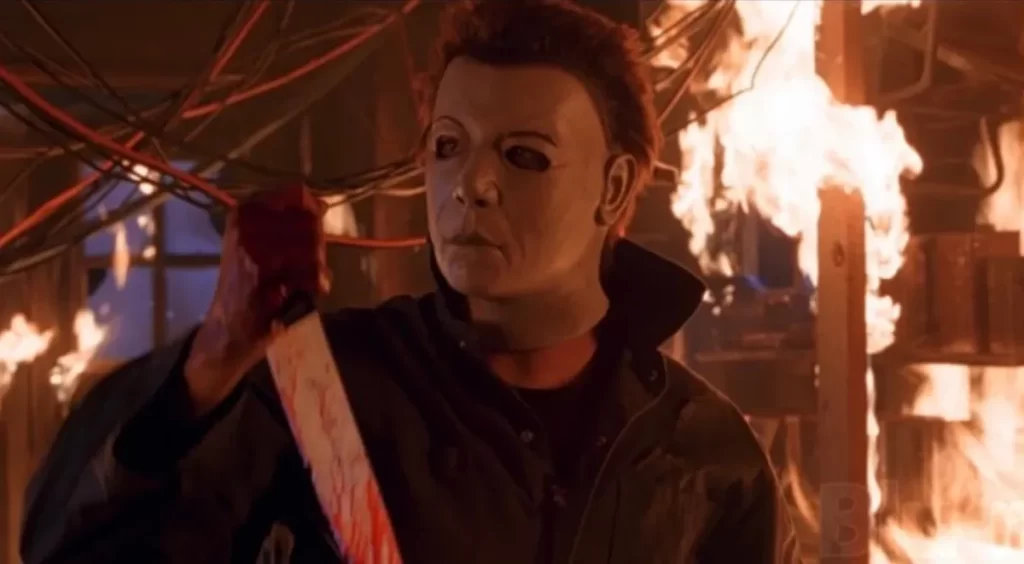
AND THEN HALLOWEEN: RESURRECTION HAPPENS
Yes, and then Halloween: Resurrection happens. Laurie is killed in the first few minutes, revealing that Michael pulled the old bamboozle switcheroonie in the previous film. She had actually just killed an ambulance driver that Michael had put the mask on. Williamson’s trick of making both Laurie and the audience believe they had killed Michael worked. But that same trick curled a finger on the monkey’s paw and led to what is definitively the worst film in the franchise.
A proto-internet streamer subplot. The kid from Smart House is there for some reason. Busta Rhymes hits Michael Myers with the Charlie Murphy front kick from that one Dave Chappelle sketch about Rick James.
Roll credits. The audience boos. Everyone who spent money on it feels like they’re being stamped to death by horses.
HALLOWEEN AS A FRANCHISE IS TERRIFIED OF ENDINGS
And this is why I say that Halloween H20 is probably the best we’re going to get out of the series, maybe ever. It is a series that, at its core, has had producers terrified of endings since even Halloween 2. Carpenter never intended there to be a sequel, or any follow ups for that matter. That was mostly the work of producer Irwin Yablans, who pushed hard to continue the story of Michael. And then, eventually, it was the work of every other producer who demanded they milk Halloween for all its worth.
H20 is a film that is antithetical to that idea. When watched as intended, ignoring Resurrection, it’s fantastic. As the end of Laurie and Michael’s story, one that shows evil is weak without fear to bolster it, it is pretty much the perfect finale. Hot off the heels of Scream’s success in 1996, H20 is often talked about as an attempt to cash in on the meta-horror craze of the 90s and early 2000s. The way people discuss it, you would think it was supposed to be a tongue-in-cheek slasher that made fun of itself and Halloween’s legacy. But in reality, aside from its humor, it ends up being quite reflective and thoughtful of that legacy.
It’s not spiteful of the films that came before it because it ends by tricking the audience. It’s what that trick represents, boldly spitting in the eye of Halloween being held prisoner for money. Mocking Halloween being stuck in an eternal cycle of rinsing and repeating the same events. It doesn’t care about franchising or longevity; it cares about telling a good story and letting its hero rest. It’s respectful to Carpenter’s creation in a way that other attempts to continue the series simply weren’t.
H20 TELLS AN ENDING, HALLOWEEN ENDS TRIES TO SELL YOU ONE
It begs the question: why does H20 work here in how it ends the series, but Halloween Ends doesn’t?
All of Ends biggest issues stem from the fact that, unlike H20, it’s trying to sell you an ending instead of making one that feels right. The maudlin closer it gives doesn’t feel real. It doesn’t feel true to the Laurie it shows us, or any other iteration of the character for that matter. It doesn’t feel genuinely emotional in any regard.
And that’s because Ends as a whole doesn’t have the spirit that H20 does. Ends is, first and foremost, a highlight reel reminding you of how cool Halloween is instead of understanding why any of its previous entries were effective. From its marketing to its incredibly clunky climax, it feels like it’s an advertisement for never letting go of Halloween, even when it should have been done a while ago. And that’s just the wrong lesson to leave on.
JANET LEIGH’S CAMEO IN H20 SPEAKS VOLUMES
Halloween H20 has a pretty famous cameo from Janet Leigh in it, an OG scream queen and the real-life mother of Jamie Lee Curtis. In it, they have a heart-to-heart as fictional characters Laurie Strode and Norma Watson. It’s made more impactful when you realize it was Leigh’s penultimate film performance, and her final performance in a horror film.
The moment serves as a cute in-joke on their real-life relationship, but more than that, it foreshadows the film’s ending. Norma urges Laurie to move past her fear, to relish her future as a survivor instead of being caught up in the past and reliving the same night over and over again.
I find this scene even more poignant now, seeing how neatly it reflects on what has happened to Halloween as a franchise in the years since the original, and especially since H20. It’s a series that got stuck in trying to continue the same story and just got progressively worse at it. In some way, it feels like it’s urging us to make a choice. No matter how deep a legacy of fear may be, it must come to an end at some point. There is no need to cling to the same stories over and over. We can enjoy them for what they are without returning to them.
No matter what the future of the Halloween franchise is, only a viewer themselves can choose where the story ends. It doesn’t matter how many times the studio brings him back, you have to make the choice. Only you decide when it ends. And for my money, H20 is the best ending you can ask for.























